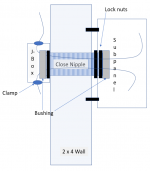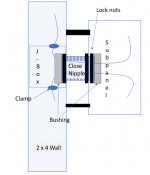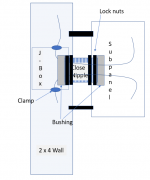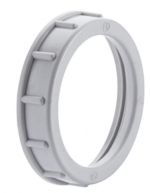ESolar
Senior Member
- Location
- Eureka, CA Humboldt County
- Occupation
- Electrician/Contractor
I have a surface mount panel and a jbox inside the wall behind panel with a close nipple connecting the two. See picture. My questions are: Do the two sealer lock nuts suffice for connection to the panel (secure and bonding)? If I use a PVC J-Box, does one lock nut suffice to secure the nipple to the J-Box? Or what needs to be done? If I use a steel box I assume that it has to be bonded. Do two lock nuts on the J-Box suffice for grounding a steel box? The J-Box is being used to secure and route UF and SER cable - no splices.






